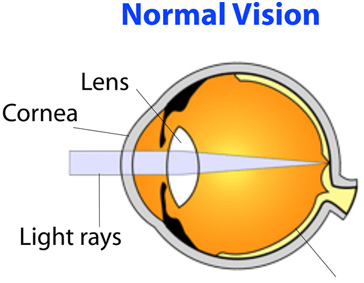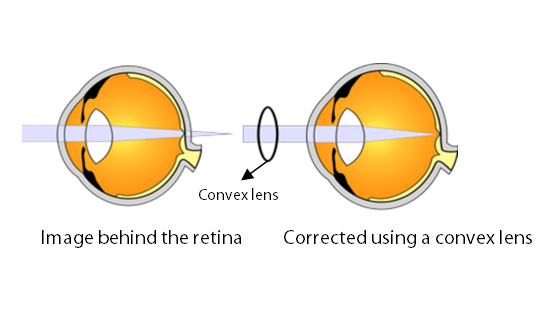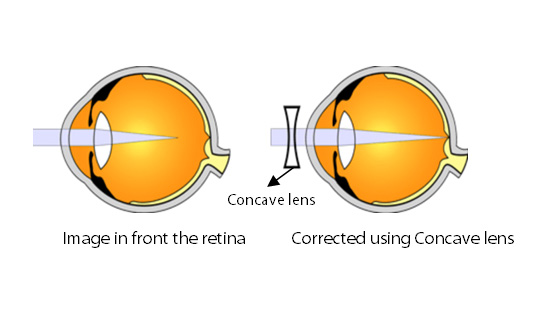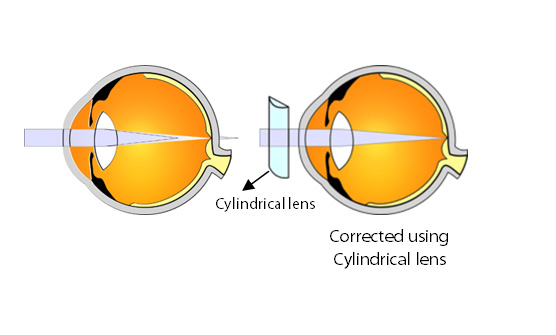Normal Vision
In normal vision light rays from an object focus on the retina

Refractive Error
- Refractive error is said to exist when the light rays get focused in front or behind the retina causing blurred vision.
Causes
- The eyeball being larger or smaller than the normal size
- Changes in the crystalline lens
- Flat or steeper corneal curvature
Symptoms of Refractive Errors
- Children can have difficulty in reading small letters on the blackboard.
- Some children squeeze their eyes while trying to see distant objects like blackboard, television etc.
- Children hold books close to their face while reading.
- Children with myopia have defective vision for distance and clear vision for near.
- They can experience eye strain while trying to read for long hours.
- Some children with hyperopia can present with squint.
- Children can develop swellings on the lids due to constant rubbing of the eyes to see things clearly.
- Eye pain and headache may occur.
- The child should be immediately brought to an ophthalmologist, if any one of the above symptoms is observed.
Types of Refractive Errors
The common types of refractive errors that occur in children are myopia (short sightedness), hyperopia (long sightedness) and Astigmatism.
Hyperopia (long sight)
In hyperopia or long sightedness, the light rays from an object form an image behind the retina because of the small size of the eye ball.

Myopia (short sight)
The light rays from an object form an image in front of the retina. This occurs when the cornea is curved too much or if the eye is too long.

Astigmatism
This occurs due to changes in corneal curvature.

Treatment
- Correction using spectacles is the best option available for refractive errors.
- The power of the glasses may change depending on the growth of the eye ball.
- An eye checkup has to be done once in 6 months for children under 5 years of age and once a year thereafter and changing glasses if when necessary.
- Children older than 15 years can use contact lenses if they don’t want spectacles. Those over 18 years of age with stable power also have the option of Lasik, a laser refractive procedure apart from contact lenses.
- Glasses should be worn constantly according to the advice of your ophthalmologist.
